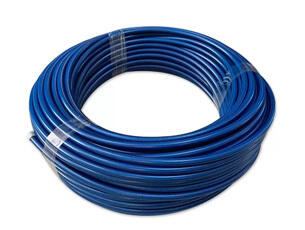
Hengshui BURK's stainless steel brake lines with Teflon coating offer the ultimate combination of strength and chemical resistance. The Teflon (PTFE) inner coating provides a smooth bore for optimal brake fluid flow, reducing pressure loss and enhancing brake response. The Teflon layer is also impervious to brake fluids, oils, and coolants, ensuring long-term reliability and preventing contamination. The outer stainless steel braid adds structural integrity, with a braided pattern designed to maximize strength while maintaining flexibility. These brake lines have a working pressure of 2800 PSI and a burst pressure exceeding 6000 PSI, making them suitable for high-performance and heavy-duty applications. The Teflon coating also reduces friction within the line, further improving fluid flow and contributing to a more responsive brake pedal feel.

Copyright © 2025 by HENGSHUI BRAKE HOSE MACHINERY CO.,LTD — Privacy Policy